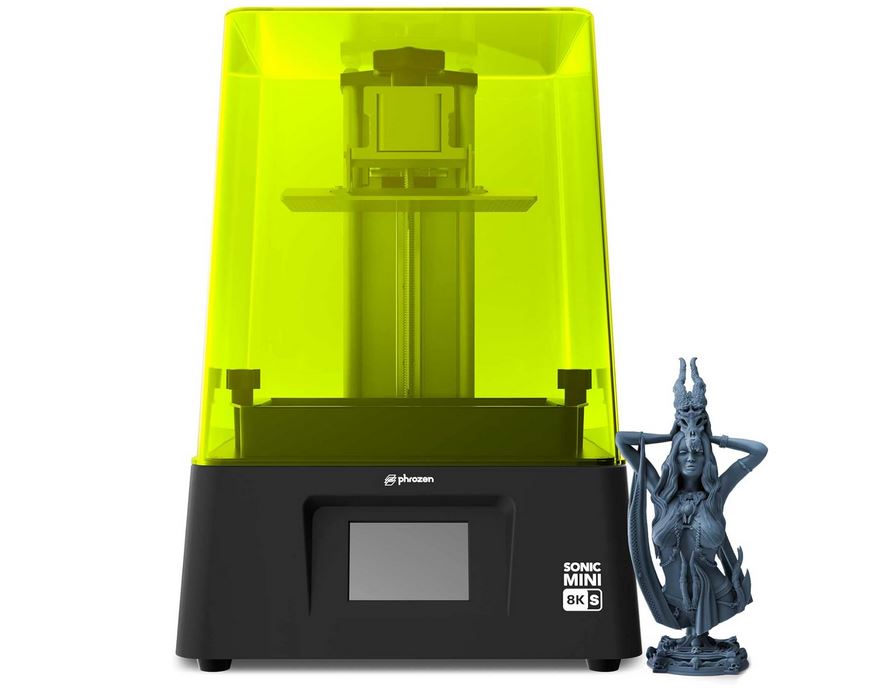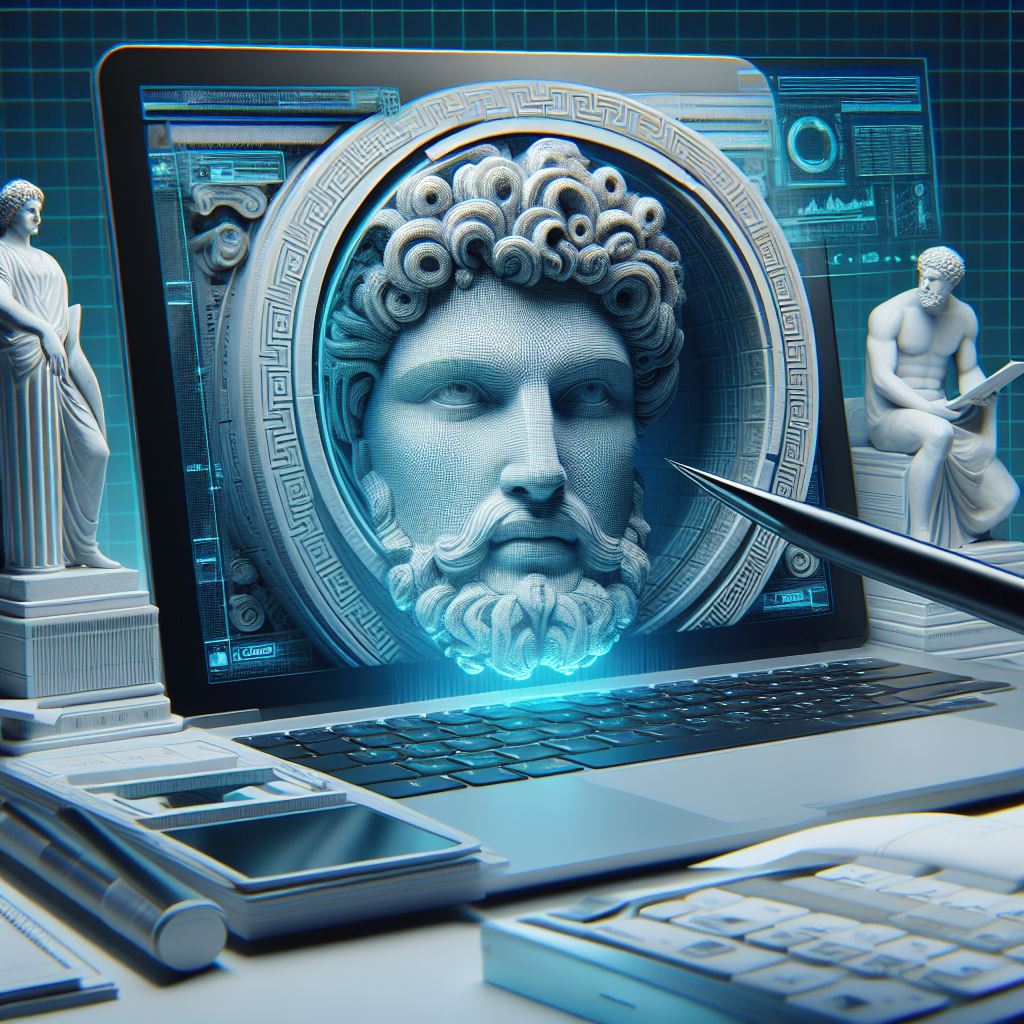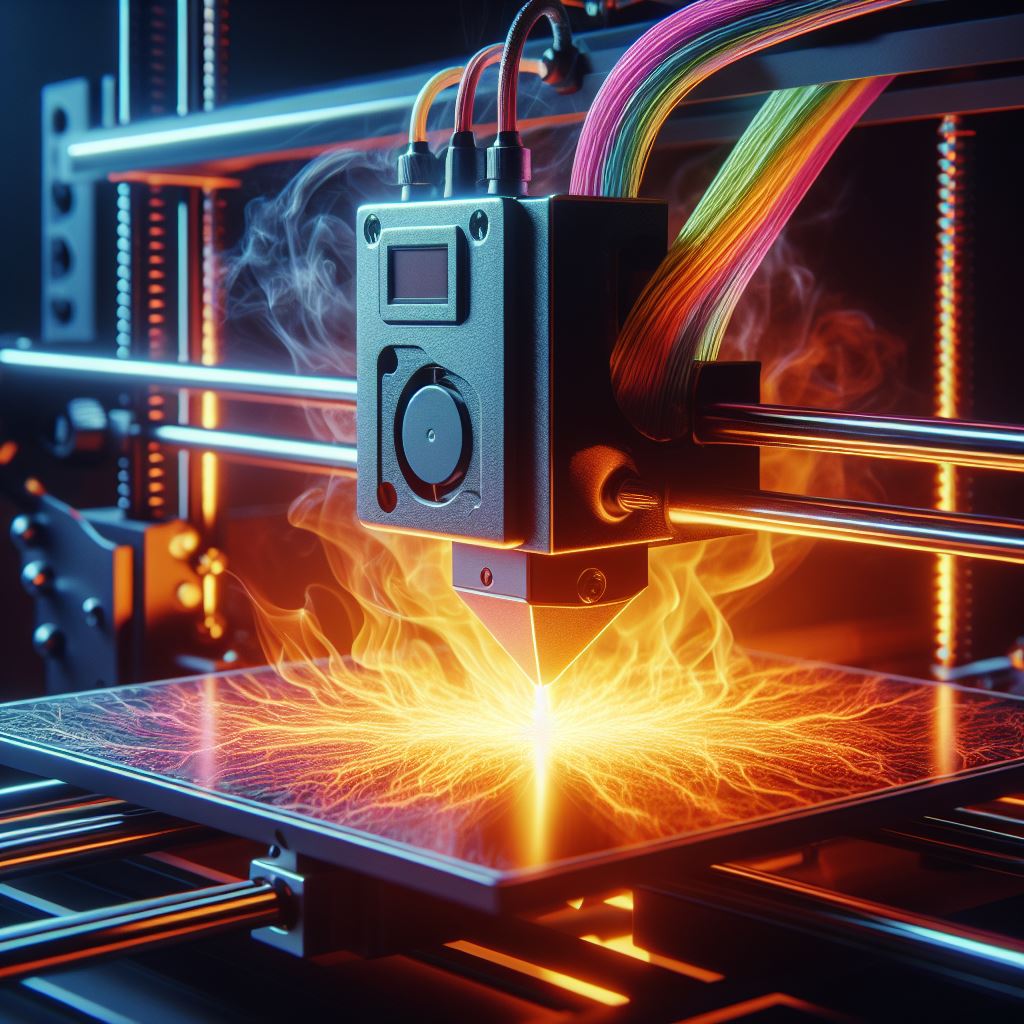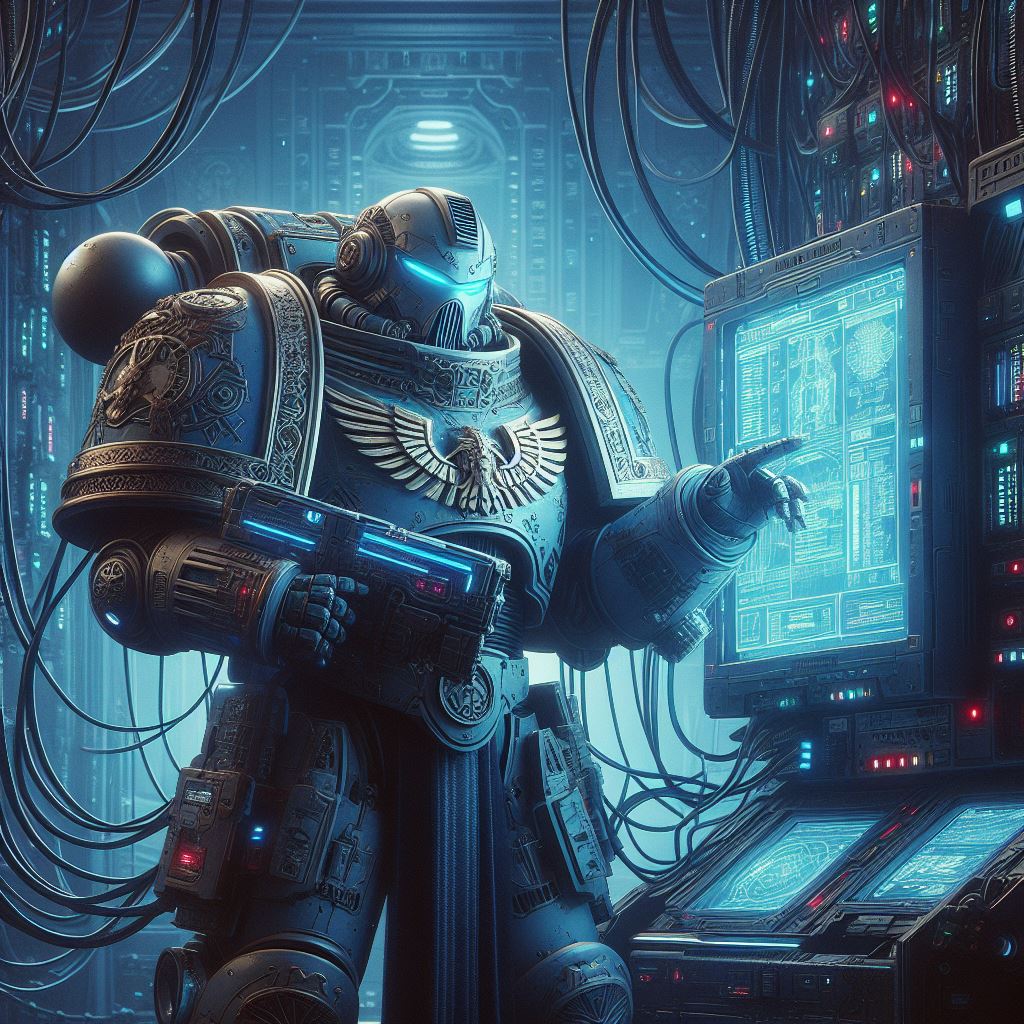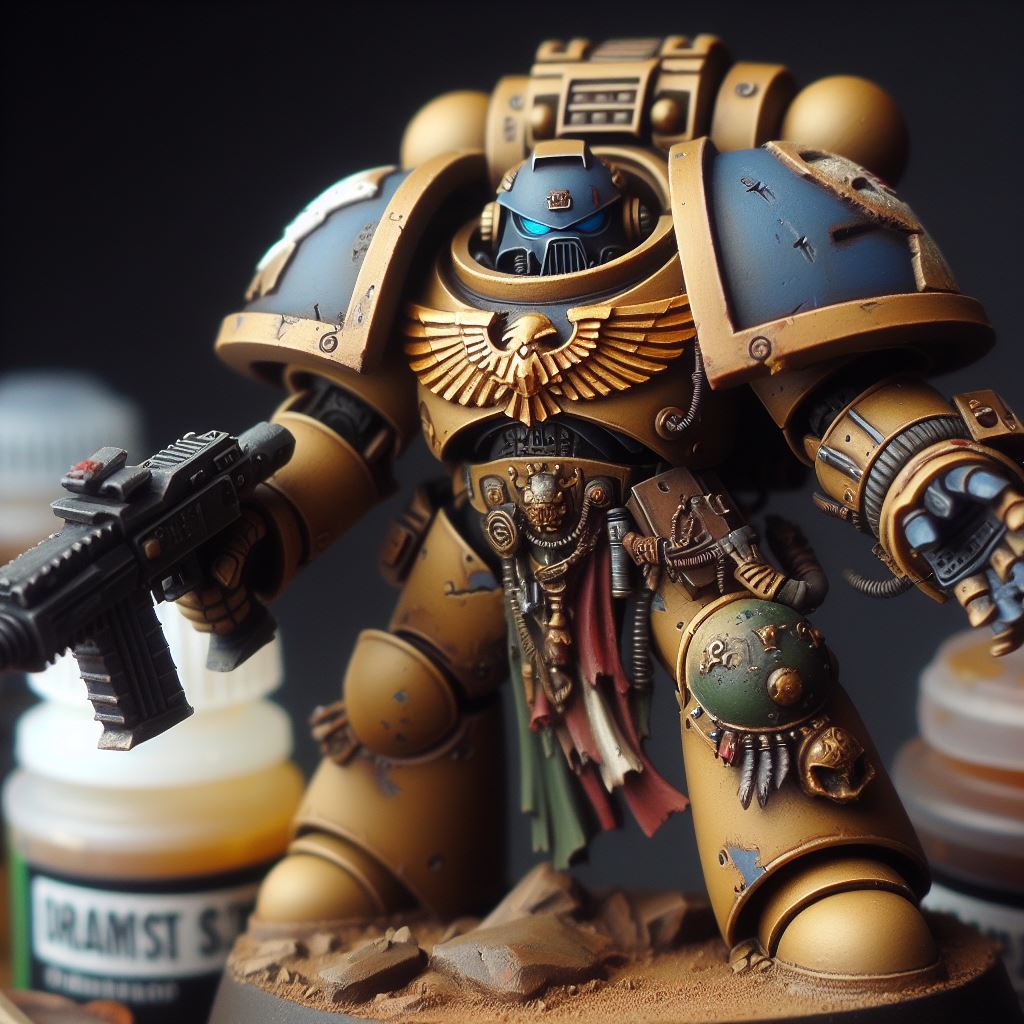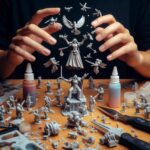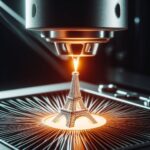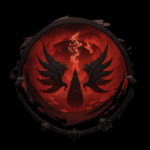Phrozen Sonic Mini 8K Review for Miniatures – A Guide
As a long-time miniatures enthusiast and tabletop gamer with over 20 years of experience, I was eager to test out the Phrozen Sonic Mini 8K resin 3D printer. At warhammeruniverse.com, we specialize in creating informational guides and interesting videos around miniatures and modeling. So when the chance came to review this highly anticipated 3D printer made for miniatures, I jumped at it.
In this ultimate guide, I’ll provide my thorough hands-on review of the Phrozen Sonic Mini 8K based on extensive real-world printing of miniatures and benchmarks. I partnered directly with top miniature designers to access STLs comparable to Games Workshop quality for testing.
My goal is to evaluate if this coveted 3D printer truly achieves “Warhammer level” detail in the consumer space. Does it live up to its reputation and price tag? Can it be the holy grail for tabletop gaming miniatures? Read on to find out!
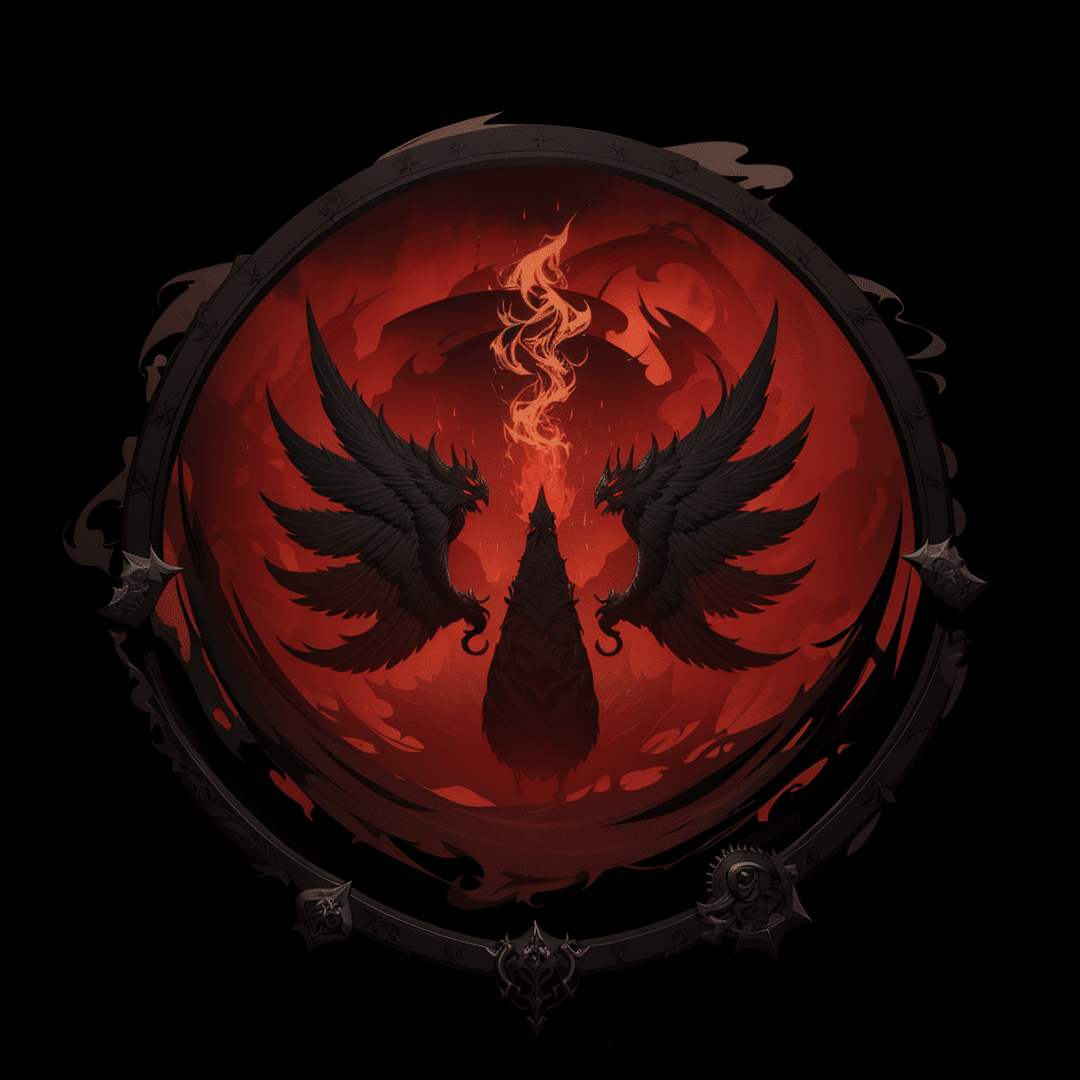
Warhammer Fans – Should We Worry About 3D Printing?
As a diehard Warhammer fan, I’ll address the elephant in the room – could this disrupt Warhammer? 3D printing definitely enables the average hobbyist to access incredibly detailed miniatures at a fraction of the cost.
So in some ways, yes it could be a threat. But I actually see it as an opportunity. 3D printing will enable more creativity from fans to augment existing armies and create custom conversions. It also helps onboard new hobbyists thanks to the lowered barrier to entry.
Let me know your thoughts in the comments. Is 3D printing a friend or foe to Warhammer? How do you think Games Workshop will respond to this technology? I’m curious to hear perspectives from fellow enthusiasts.
Read our article discussing this here: How 3d Printing is changing Tabletop gaming
Phrozen Sonic Mini 8K Review: Overview and Benchmarks
The Phrozen Sonic Mini 8K brings unrivaled print quality for miniatures and tabletop gaming. Key specs:
- Build Volume: 165 x 720 x 180 mm
- LCD Screen: 7.1″ Monochrome 2K
- Resolution: 22 microns (.022mm)
- Print Speed: Up to 80mm/hour
Not only is it an 8K printer, but with a 22 micron XY resolution on a 7.1″ screen, it achieves industry leading details in a compact footprint. This pixel density even surpasses many industrial SLA printers costing 10X as much.
So how does it actually perform with miniatures? In my testing, the Phrozen Sonic Mini 8K matches and even exceeds the level of detail from leading miniatures manufacturers like Games Workshop and Forge World.
But it does have some quirks that I’ll cover later regarding resin compatibility, software, and general ease of use. Overall though, this is currently the highest print quality in the consumer market for miniatures and tabletop gaming.
Unboxing and Setup
Unboxing the Phrozen Sonic Mini 8K was quick and simple. Encouragingly, the machine felt sturdy and robust straight out of the box thanks to its mostly metal construction. No assembly is required apart from installing the vat and build platform.
After plugging it in, I jumped right into calibration and test prints using model files pre-loaded on the SanDisk USB drive Phrozen includes. This saved me hassle sourcing benchmark files myself. Props to Phrozen on that detail!
Leveling the print bed was straightforward using the paper method, though I later discovered some tips to achieve better first layer adhesion I’ll share below.
Printing Performance and Quality Results
My first test print of a castle model pre-supported on the USB drive showed jaw-dropping quality immediately. The level of detail was incredible with no noticeable voxelization even when peering closely.
This gave me confidence to try a more ambitious sculpt – a large turtle monster model with lots of fine texture. I prepped the file in the included 30-day trial of VoxelPrint’s Tango slicer software.
The final print astonished me with its realism and precision. Tiny details like ridge textures and scales were perfectly defined. Honestly, the quality exceeded what I thought possible for the Sonic Mini 8K based on its specs and size.
To really validate its capabilities for miniatures, I collaborated with top creators on MyMiniFactory like Blackforge Games, Redmakers, and Bestiarum Miniatures. They kindly provided high quality STLs on par with Games Workshop sculpts.
Printed miniatures now readily surpass anything created through traditional casting techniques when dialed in properly. The Phrozen Sonic Mini 8K clearly achieves “Warhammer Quality” results.
Phrozen Sonic Mini 8K Review: Resin Performance
Phrozen sent me a sampler of their Aqua Grey 8K resin to test with the printer. This low-odor resin features tiny nanoparticles to achieve maximum print details.
A downside is it has lower flexibility than standard resins. Although prints show stunning quality, I did experience occasional cracking and brittleness on small protruding features.
Proper curing and using a heated chamber to maintain ~22°C (72°F) room temperature is mandatory for crisp, robust prints. Otherwise you may struggle with the resin’s thermal sensitivity.
I also mixed the 8K resin with other 3rd party photopolymers successfully. Using 50% Inland transparent blue resin provided vibrant colors without hugely sacrificing fine details. So the Sonic Mini 8K gives flexibility to experiment with different resins.
Phrozen Sonic Mini 8K Review: Software, Prints, and Post Processing
Phrozen thoughtfully designed the Sonic Mini 8K to work with common slicing software like Lychee and ChituBox out of the box. I ran into an odd issue with raft bases generating excessively tall when using Lychee specifically. This caused some first layer squishing.
Switching to ChituBox resolved the problem for me. So I recommend starting there if running into any inconsistencies between slicers. Using proven community profiles from Phrozen’s website worked perfectly in ChituBox.
After printing, I give models an initial 30 second IPA rinse before using a Wash and Cure station for final cleaning. Properly drying pieces before final UV curing prevents white residue. And remember to always wear gloves when handling uncured prints!
An important reminder about resin 3D printing – LCD screens have a limited lifespan. Expect to replace this component approximately every 1,000 print hours depending on your layer exposure times. Replacement LCDs cost ~$250 currently.
Phrozen Sonic Mini 8K Review:Design and Hardware
Despite costing significantly less than industrial counterparts, the Phrozen Sonic Mini 8K incorporates impressive build quality and materials like a metal vat and etched aluminum build plate.
Little touches like including high quality accessories and a SanDisk USB drive increase perceived value too. Attention clearly went into crafting a premium user experience straight out of the box.
However, the bare LCD screen lies exposed without a protective glass sheet covering it. This poses a risk for irreversible damage if resin leaks underneath the FEP film. I highly recommend DIY-ing a screen protector out of overhead transparency film as a safeguard.
While mostly plug-and-play, I did run into a few operational hiccups. First, the bare metal build plate rails caused calibration inconsistencies by restricting adjustments. Blue painter’s tape helps flashes adhere better.
Second, the etched glass print surface sticks too aggressively! I chiseled off more than one model using heavy tools. Reducing bottom layer exposure alleviates adhesion while maintaining successful prints.
And overflowing resin would splash inside when the build plate lifted too high after prints. So beware of messy drips with the Sonic Mini 8K and contain spills.
Final Verdict
The Phrozen Sonic Mini 8K performs unbelievingly well despite its compact size and competitive price point compared to commercial printers. Print quality hits an unbelievable level of detail across miniatures and figures.
In my experience, it even reliably matches and surpasses sculpts from leading miniature companies like Citadel and Forge World. There’s no longer a question of whether 3D printers can achieve so-called “Warhammer Level” quality.
However, to unlock the Sonic Mini 8K’s full potential requires some user finesse regarding resin curing, thermal management, and dialing in profiles. Thankfully an active community exists to help newcomers overcome the initial learning curve.
So is this the holy grail for tabletop gamers and hobbyists? With some tweaking, the Phrozen Sonic Mini 8K impressed me as the current pinnacle for affordable high detail 3D printing tailored specifically for miniatures. It earns my wholehearted recommendation for enthusiasts wanting next-level print quality to take their modeling to the next level.
Let me know if you have any other questions in the comments! I’m happy to chat more about my hands-on experience with this impressive little machine.
Looking to buy? Click here!
Related Articles
A comprehensive Anycubic Photon Mono X 6K 3d pritner rview for hobbyists. Read our in-depth analysis outlining print quality, precision, speed, and reliability benchmarks for tabletop miniatures.
An authoritative review on the Elegoo Mars 4 printer for war gaming miniatures. Check out our extensive product review showcasing resolution, accuracy, and effectiveness metrics for wargaming applications.
A step-by-step tutorial on making 3d printed symbols for warhammer 40k for Warhammer 40k units using 3D printing. Peruse our detailed walkthrough explaining how to design and produce personalized decals for your armies.
An introduction to Making your own custom miniatures with 3D printing for hobbyists. Read our beginner’s overview outlining creative methods to envision and print custom tabletop gaming figures.
A commentary on 3D printing’s transformative impact on tabletop war gaming. Check out our analytical article showcasing the technology’s ability to enable new creative outlets in the hobby.
A troubleshooting guide for fixing common 3D printing issues. Read our handy manual outlining solutions to errors like failed prints, clogs, poor adhesion, inaccurate dimensions, and more problems.
A walkthrough on positioning designs for resin printing. Check out our robust primer explaining how to orient models on the build plate to minimize supports and prevent print failures.
A product guide showcasing the top 3D printers for hobbyists focused on miniatures and terrain. Peruse our 2023 buyer’s manual highlighting affordable printers that produce superb tabletop gaming models.
A calibration guide for tuning temperatures on 3D printers. Read our robust walkthrough demonstrating processes to refine hotend and bed thermistors for maximizing print quality.
A cost analysis how much 3D printing miniatures cost for entire Warhammer forces. Check out our pricing overview to help budget your next tabletop army based on model quantities and material expenses.

